#deepartment
Explore tagged Tumblr posts
Text
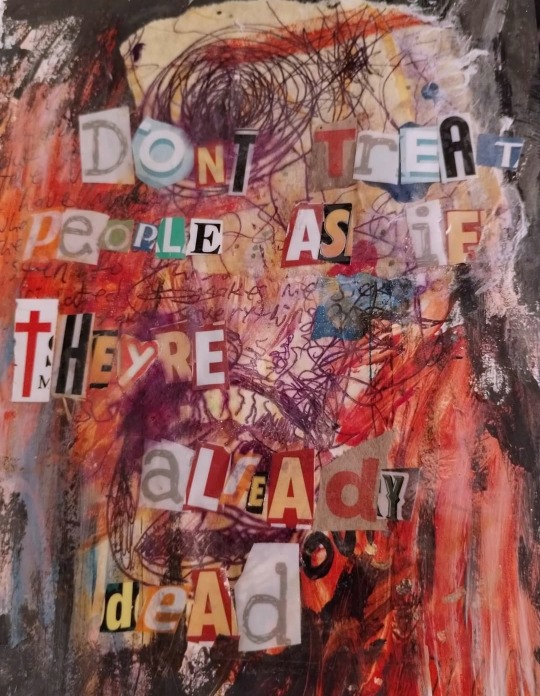
#art#artwork#weird art#obscure art#queer artist#mesaages#deepart#alternative#grunge art#dark grunge#grunge#collage art#collage#mixed media#drawings#drawing#magazine clippings#horror#ominous#deep#thoughts
9 notes
·
View notes
Text
Fotowalk BERLIN
Liebe Fotofreundin, lieber Fotofreund,wie September 2024 in dem Beitrag Berlin, Berlin, wir fahren nach Berlin angekündigt, veranstalten die Fotofreunde Münsterland e.V., im Juni 2025 einen Fotowalk in Berlin. Das erwartet dich … Highlight ist eine professionell angeleitete Foto-Tour durch das Innerste des ehemaligen Flughafens Tempelhof, der Mutter aller Flughäfen. Du bekommst die Möglichkeit,…
0 notes
Text
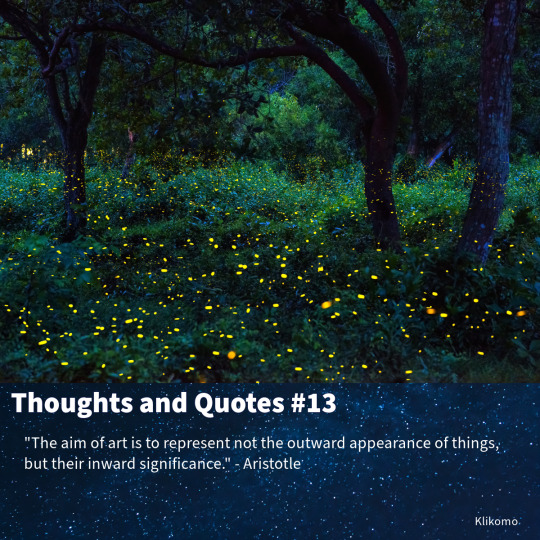
Thoughts and Quotes #13
#Thoughts and Quotes#InwardBeauty#ArtAndSoul#CreativeExpression#DeepArt#PhilosophyOfArt#AristotleWisdom#InnerSignificance#BeyondTheSurface#ArtisticInspiration#MindfulArt#ArtForTheSoul#ArtfulThoughts#MeaningfulArt
0 notes
Text
instagram
MSI Un despliegue de personalidad, monstruosamente embeleza, fluye, te lleva de la mano a los parajes más recónditos del ser, un despliegue de auras...
Tecnica mixta (remedios, líquidos caducados, acuarelas, esmalte de uñas, carboncillo, grafite, escupitajos, medicamentos) sobre manual de teclado MSI.
#illustration#watercolorartist#weirdart#bizarreart#shibuya#darkart#moolperu#deepart#illustrazione#souls#obsceneartwork#limaperu#rawfresh#occultart#lostsouls#monsterbike#aura#lowbrowart#moolart#mixedmediaartist#darkcult#msi#kawai#japanoise#drawingar#オンライン#Instagram
1 note
·
View note
Photo
Rich Evans: 😰

Jay is now also made of worms
12 notes
·
View notes
Text
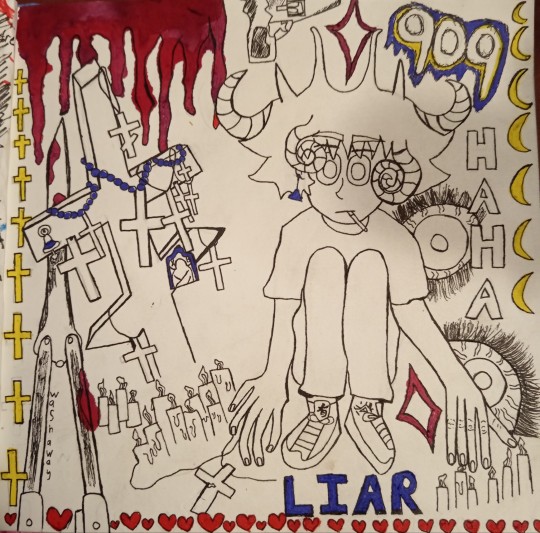
|One of us|
Material: mascara, markers, capillary pen
Paper thickness 200 microns
#deepart #deep #originalcharacter #OC #traditionart #art
-----------
Треш
Материалы: тушь, фломастеры, капиллярная ручка
Плотность бумаги 200 микрон или 200 г/м
4 notes
·
View notes
Text
I can't create or generate images directly, including cartoons. However, I can guide you on how to create cartoon images using tools or software! Here are a few options:
Digital Drawing Tools:
Use software like Adobe Illustrator, Procreate, or Clip Studio Paint to draw your own cartoon.
These tools offer brushes and features specifically for cartoon-style art.
AI-Powered Cartoon Generators:
Try platforms like DeepArt, Toonify, or Cartoonify to turn photos into cartoon-style images.
Some apps, like Prisma or Voilà AI Artist, can also cartoonize your photos.
Online Cartoon Makers:
Websites like Canva or BeFunky have cartoon effects and templates.
Tools like Pixton or ToonDoo let you create custom cartoon characters and scenes.
Mobile Apps:
Apps like PicsArt, Snapseed, or Cartoon Photo Editor can transform photos into cartoons.
If you need help with a specific tool or want tips on cartoon creation, let me know! 😊
0 notes
Text
Online Cartoon
I can guide you on how to create cartoon images using tools or software! Here are a few options:
Digital Drawing Tools:
Use software like Adobe Illustrator, Procreate, or Clip Studio Paint to draw your own cartoon.
These tools offer brushes and features specifically for cartoon-style art.
AI-Powered Cartoon Generators:
Try platforms like DeepArt, Toonify, or Cartoonify to turn photos into cartoon-style images.
Some apps, like Prisma or Voilà AI Artist, can also cartoonize your photos.
Online Cartoon Makers:
Websites like Canva or BeFunky have cartoon effects and templates.
Tools like Pixton or ToonDoo let you create custom cartoon characters and scenes.
Mobile Apps:
Apps like PicsArt, Snapseed, or Cartoon Photo Editor can transform photos into cartoons.
If you need help with a specific tool or want tips on cartoon creation, let me know! 😊
0 notes
Text
AI Tools Revolutionizing Design & Creativity: Transforming Modern Artistry 🎨🤖
In today's rapidly evolving digital world, AI-powered tools are revolutionizing the design and creative landscape. From generating innovative concepts to streamlining complex workflows, AI tools have become an indispensable part of the modern creative process. Whether you're a professional designer or a budding artist, AI design tools offer endless opportunities to elevate your creativity. 🌟
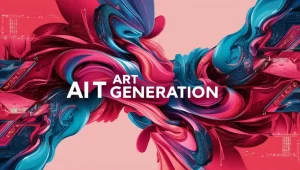
How AI Enhances Creativity
AI-powered tools like Adobe Sensei, Canva's AI features, and tools for generative art are breaking barriers in design. They enable designers to:
Automate repetitive tasks like resizing, background removal, and formatting, freeing up time for more creative pursuits.
Generate fresh ideas using AI algorithms that analyze trends and provide insights for innovative concepts.
Personalize designs based on user preferences, making them more engaging and impactful.
By harnessing the power of machine learning and neural networks, these tools empower artists and designers to push boundaries and experiment with styles that were once unimaginable.
Streamlining Workflows
AI design tools not only foster creativity but also enhance productivity. With features like predictive design suggestions and real-time collaboration, they simplify processes and help teams deliver projects faster. From graphic design to architectural modeling, AI-driven solutions are transforming the way professionals approach their craft.
Inspiring Modern Artistry
AI-generated art is reshaping modern artistry by blending technology with creativity. Tools like DALL·E and DeepArt allow creators to produce visually stunning, unique pieces of art with just a few clicks. The fusion of AI and human creativity is giving rise to an exciting era of innovation in art and design.
Discover more about how AI is revolutionizing design and creativity by visiting The Art Central.
0 notes
Text
AI对创意产业的颠覆性影响
随着人工智能(AI)技术的快速发展,创意产业正经历着前所未有的变革。AI不仅改变了艺术创作、音乐制作和设计流程,还重新定义了创意的本质和人类创作者的角色。本文将探讨AI对创意产业的颠覆性影响,并分析其带来的机遇与挑战。 1. AI在艺术创作中的应用 1.1 生成艺术的兴起 AI技术使得生成艺术(Generative Art)成为可能。通过深度学习和神经网络,AI可以分析大量的艺术作品,并生成全新的艺术品。例如,OpenAI的DALL-E和DeepArt等工具能够根据用户的描述创作出独特的图片。这种创作方式不仅提高了艺术创作的效率,还为艺术家提供了新的灵感来源。 1.2…
0 notes
Text
Exploring AI-Driven Design Tools for 2025 and Beyond
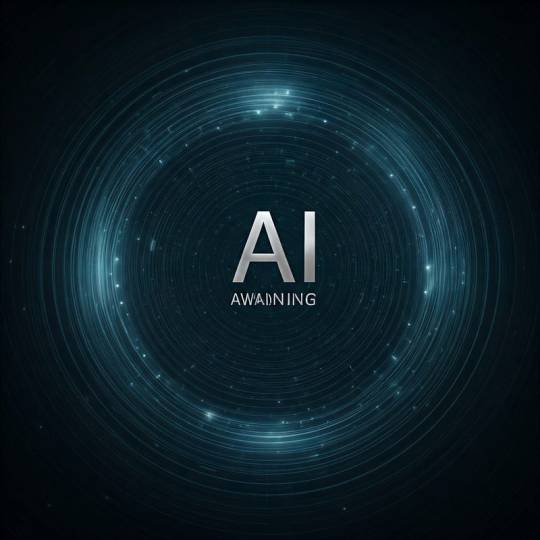
The Rise of AI in Design
AI has permeated nearly every industry, and design is no exception. Traditional design workflows, often time-consuming and resource-intensive, are now being enhanced by AI’s ability to analyze data, predict trends, and produce high-quality designs rapidly. These tools not only save time but also empower designers to focus on creativity and strategy.
Key Benefits of AI-Driven Design Tools
1. Efficiency and Speed
AI tools excel at automating repetitive tasks such as resizing images, adjusting layouts, and optimizing colors. Tools like Adobe Sensei and Canva’s Magic Resize feature allow designers to create multiple versions of their work in seconds.
2. Enhanced Creativity
With AI tools like DALL-E and DeepArt, designers can generate unique visuals based on text prompts. These tools provide inspiration and help overcome creative blocks, enabling designers to experiment with new styles and concepts.
3. Personalization at Scale
AI can analyze user behavior and preferences to create highly personalized designs. This is particularly valuable in industries like e-commerce and digital marketing, where tailored experiences drive engagement and conversions.
4. Cost-Effectiveness
By reducing the need for extensive manual effort, AI tools lower production costs. This makes professional-grade design accessible to smaller businesses and freelancers.
Popular AI-Driven Design Tools for 2025
1. Adobe Firefly
Adobe’s AI-powered tools continue to set industry standards. Firefly offers text-to-image and text effects generation, making it easier for designers to visualize and execute ideas quickly.
2. Canva AI
Canva’s intuitive platform integrates AI features like Magic Write, Magic Resize, and content suggestions, making it a favorite among non-designers and professionals alike.
3. Figma’s AI Plugins
Figma has introduced several AI-powered plugins like PluginPal and Spellbound, which assist in generating prototypes, improving typography, and correcting grammar in UX copy.
4. Runway ML
This tool specializes in AI-driven video editing, enabling creators to edit videos, remove backgrounds, and apply filters with minimal effort.
5. DeepArt
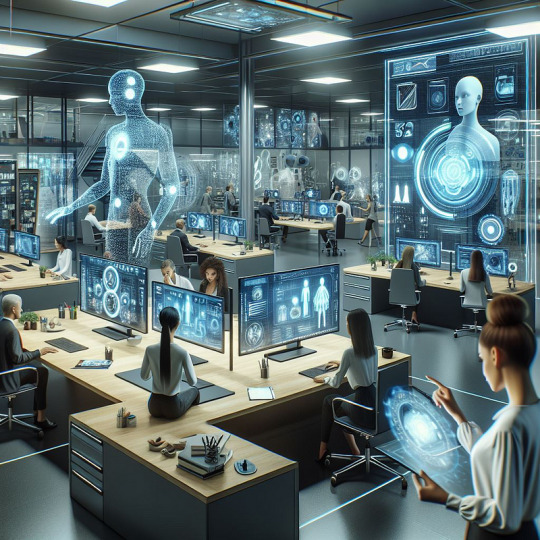
Explore AI CERT’s comprehensive certification programs and take advantage of special discounts to elevate your design expertise. Visit AI CERTS today and use code NEWCOURSE25 to save 25%.
Platforms to Learn AI-Driven Design
To master AI-driven design tools, several platforms offer comprehensive courses:
AI Certs: Specializes in AI-focused certifications, including design tools and their applications.
Coursera: Offers courses from top universities and companies on AI in design and related fields.
Udemy: Provides affordable courses tailored to AI-driven design and creative workflows.
LinkedIn Learning: Features a wide range of professional courses on integrating AI into design practices.
Skillshare: Focuses on practical, project-based learning for AI tools in creative industries.
Challenges and Ethical Considerations
While AI-driven design tools offer immense benefits, they also present challenges:
1. Quality Control
AI can sometimes generate suboptimal results, requiring human intervention to refine the output.
2. Job Displacement Concerns
The automation of tasks has sparked fears of job losses in the design industry. However, many experts argue that AI will augment rather than replace human designers.
3. Copyright and Ownership Issues
The use of AI-generated content raises questions about intellectual property rights. Clear guidelines are needed to address these concerns.
Future Trends in AI-Driven Design
As we look beyond 2025, the role of AI in design is expected to expand further:
Real-Time Collaboration: AI tools will enable seamless collaboration across teams by suggesting real-time edits and improvements.
Augmented Reality (AR) and Virtual Reality (VR): AI-driven tools will integrate with AR and VR technologies to create immersive design experiences.
Hyper-Personalization: Advanced algorithms will deliver even more tailored designs by analyzing vast amounts of data.
Sustainability: AI tools will help designers create environmentally conscious designs by optimizing resources and reducing waste.
How to Stay Ahead
To leverage AI-driven design tools effectively, designers should:
Stay Updated: Follow industry blogs, webinars, and online courses to learn about the latest tools and features.
Experiment: Embrace AI as a partner in creativity by experimenting with different tools and techniques.
Upskill: Develop complementary skills such as data analysis and UX design to remain competitive.

Conclusion
AI-driven design tools are not just a passing trend; they represent a fundamental shift in the creative process. By embracing these tools, designers can unlock new levels of efficiency, creativity, and personalization. As we move into 2025 and beyond, staying informed and adaptable will be key to thriving in the ever-evolving design landscape. Whether you’re a seasoned professional or a budding designer, the future of design powered by AI offers exciting possibilities to explore.
0 notes
Text
Künstliche Intelligenz in der Fotografie: Entwicklung und Grenzen
0 notes
Text
Creating Art with AI
Introduction to AI in Art
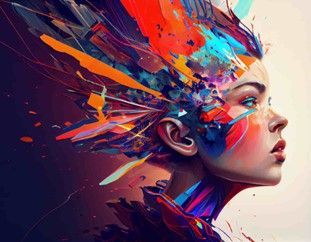
Integrating artificial intelligence (AI) in visual art has been a remarkable development since the early 1970s. One of the pioneering efforts was Harold Cohen’s creation of AARON, an autonomous drawing program. This marked the beginning of a new era where human creativity blends with machine intelligence, giving birth to once unimaginable art forms. With AI advancements, like machine learning, artists now have an expanded toolkit to bring their visions to life, offering an optimistic future for art where technology and imagination converge. AI’s influence extends across various art forms, with visual art being one of the most prominent. Machine learning techniques, such as Generative Adversarial Networks (GANs), allow AI to analyse existing art, creating new drawings, paintings, and complex graphics. These networks push the boundaries of what’s possible, letting creators explore new artistic realms. Similarly, in music, AI algorithms study patterns in existing compositions and generate original pieces that span genres and styles, adding fresh melodies and harmonies to the sound world. In literature, AI models like GPT-3 produce poetry, stories, and prose that mirror human writing styles, while in the performing arts, AI aids choreographers and playwrights in crafting dance routines and scripts. AI has already produced striking works in visual art, such as the portrait *Edmond de Belamy*, which was created using GANs and auctioned for a substantial sum. AI platforms like DeepArt, Artbreeder, and DALL-E have emerged, enabling users to create unique art by blending existing styles, manipulating images, or generating new visuals from descriptive prompts. For students eager to dive into AI art, platforms like Google's AI Experiments and AutoDraw offer interactive tools for exploring creative potential. As AI continues to evolve, it introduces new trends in art, such as immersive experiences and enhanced generative models, pushing the boundaries of creativity. The future of AI in art promises endless possibilities, where technology serves as both a tool and a collaborator in the creative process.
For more, visit: https://www.aibrilliance.com/blog/creating-art-with-ai
0 notes
Text
AI in Art Creation: Rapid Advancement and Challenges
AI has made remarkable strides in the field of art. From paintings to music to literature, AI systems can now generate art in various styles by analyzing large datasets and learning patterns. Tools like DeepArt and DALL·E allow users to generate visual artwork, breaking traditional boundaries of creativity. However, when it comes to nude art, AI-generated works can raise controversial issues related to ethics, privacy, and societal impact.
1. AI's Role in Art Creation
As a tool, AI enables artists to create works that might not have been possible through traditional means. By mimicking or inventing different artistic styles, AI allows for a novel form of artistic expression. For some artists, AI is seen as a creative assistant-expanding the boundaries of what can be imagined and produced.
However, nude art generated by AI poses a unique challenge. While traditional nude art has historically been valued as a form of human expression, AI-generated nude images can lead to problems when used maliciously, to invade privacy, or to create inappropriate content.
2. Ethical and Moral Considerations
One of the most pressing issues with AI-generated nude art is the balance between artistic freedom and the protection of individual dignity. AI Nude nude images could inadvertently violate privacy or perpetuate harmful stereotypes. For example, AI tools could be used to generate fake images based on real people's likenesses without consent, leading to potential harm such as defamation or violation of personal privacy.
Critics argue that AI-generated nude art might undermine the depth of human artistic experience, turning the creative process into a mechanical image-generation exercise. The question then becomes: Does AI-generated art, especially in the form of nudity, still have artistic value, or is it merely a technical production without deeper meaning?
3. Legal and Regulatory Issues
Laws surrounding Nude AI content are still underdeveloped in many countries. In certain jurisdictions, generating nude content with AI could lead to legal consequences if it infringes on someone's likeness or violates privacy rights. This has led to platforms and companies enforcing content policies to limit misuse, especially with sensitive content like nude art or pornography.
Some AI platforms have implemented restrictions or ethical guidelines to prevent users from generating harmful, explicit, or illegal content. However, the challenge remains: how to regulate AI-generated content in a way that preserves creative freedom while preventing exploitation or harm?
4. Social Impacts
The emergence of AI-generated nude art also raises questions about its broader social and cultural implications. Contemporary views on gender, sexuality, and nudity often differ from traditional cultural norms. Does AI-generated nude art reflect diversity and inclusivity in contemporary art, or does it contribute to issues like gender bias and sexual objectification?
Additionally, AI's growing involvement in creative processes might blur the line between human and machine creation. As AI becomes more involved in art, questions about the authenticity and originality of these works come to the forefront. Can AI-generated nude art truly be considered "art," or is it simply a byproduct of technological algorithms?
Conclusion: Ethics and Technology in Tandem
Ultimately, AI-generated nude art is a topic that involves navigating the tension between technological innovation and ethical responsibility. While AI opens up new possibilities for artistic expression, it also introduces potential risks-especially when used to create content that might be harmful or invasive. Balancing the freedom to create with the need to protect individual rights and uphold social responsibility will be an ongoing challenge as AI continues to evolve.
If you would like to explore any of these aspects further or have additional questions, feel free to ask!
0 notes
Text
AI in Art: Everything You Should Know About Its Role and Future
New Post has been published on https://thedigitalinsider.com/ai-in-art-everything-you-should-know-about-its-role-and-future/
AI in Art: Everything You Should Know About Its Role and Future
There is a famous quote by Albert Einstein that says, “Creativity is intelligence having fun.” But what happens when intelligence is no longer just human?
Then, it becomes an artificial intelligence (AI). Read on to learn how AI in art is making waves and why it has become the talk of the town.
The following article will discuss AI’s role in art, the opportunities it offers, the challenges it presents, and more.
The Intersection of AI in Art and Creativity
AI has changed the world of art by boosting creativity, automating processes, and generating unique works. It collaborates with artists to generate new possibilities, blurring boundaries between human and machine creativity.
However, there are some questions:
Is AI truly creative, or is it mimicking human work?
How does it change our understanding of art?
Is AI just a copycat or a creative genius?
Opinions differ. Some critics argue that AI is merely a reflection of what already exists, copying patterns without any true originality. However, others see AI as a powerful creative tool that expands human imagination. As David Holtz, the founder of MidJourney, puts it, “We see this technology as an engine for the imagination.”
Applications of AI in Art
Here are a few applications of AI in art:
Generative AI
Generative AI is a new way of making art with the help of machines. Artists give the AI specific instructions, and it creates unique artwork based on those inputs. This can include anything from abstract paintings to digital sculptures.
Tools and Technologies Behind Gen AI in Art
Generative Adversarial Networks (GANs) are a key technology behind AI art. GANs use two neural networks working together. One network, the “generator,” creates images, while the other, the “discriminator,” checks if the images look real. This back-and-forth process helps the generator refine its output, producing more convincing and realistic images over time.
When AI in Art Gets Noticed
Artists like Memo Akten and Mike Tyka used the DeepDream algorithm to create art. They presented it at a gallery in San Francisco in 2016. This was one of the first times AI-generated art was displayed in a public exhibition.
The big moment came in 2018. The Portrait of Edmond Belamy, an AI-generated artwork created by the Paris-based group Obvious, was sold at Christie’s auction house. It is considered the first widely publicized sale of AI art.
Style Transfer
Style transfer uses AI to blend the style of one image with the content of another. This means you can turn a simple photograph into an artwork inspired by Van Gogh, Picasso, or any other iconic artist.
Apps like Prisma and DeepArt analyze the patterns, colors, and textures of a style image and apply them to your chosen photo.
Enhancing Artistic Processes
Tools like Adobe Sensei help with color correction, object removal, and image resizing. Now, artists have enough free time to focus on creativity rather than repetitive tasks.
AI can also generate unique patterns, music, and visuals that may be difficult for humans to imagine or produce. AI tends to be a modern-day muse that encourages artists to experiment and think outside the box.
Personalized Design
AI helps create designs that feel personal to each user. It adjusts interfaces based on user behavior, preferences, and demographics.
Predictive Design
AI can also predict what design trends or customer needs will emerge. It analyzes data to forecast what elements will catch on in the future. Predictive design ensures that what’s created today will still be relevant tomorrow.
The Benefits of AI in Art and Design
Here are a few benefits of AI brings to art and design:
Enhanced Creativity: AI acts as a helpful companion for artists, opening doors to fresh possibilities beyond traditional methods. It can inspire new design ideas, recommend color schemes, and even bring concepts to life with realistic 3D models.
Efficiency and Productivity: AI Automates time-consuming tasks like color correction and resizing. This frees up time for creatives to refine concepts and explore new ideas.
Accessibility: AI makes advanced creative tools available to everyone, regardless of skill level. It empowers individuals without formal training to produce professional-quality work.
Innovation: AI tools enable the creation of new art forms by blending different mediums and techniques. They encourage interdisciplinary collaborations, such as AI in bio.
Art, Ethics, and AI: Who Holds the Brush?
The rise of AI-generated art has opened up a pandora’s box of ethical and philosophical questions.
Who Owns the Art?
One of the biggest questions is ownership. If an artificial intelligence creates a piece of art, who owns it? Current legal frameworks often struggle to address these complexities, leaving creators and innovators navigating uncharted territory.
Where Does Creativity Come From?
AI in art raises questions about originality. While some view it as just another medium, others worry it might strip away the personal, emotional touch that makes human art unique.
Are Privacy and Bias at Stake?
Privacy and bias are major concerns. AI systems often use personal data or copyrighted material without permission. This can violate privacy and create biased, stereotypical art.
Will Technology Replace Human Artists?
As AI-generated art becomes more advanced, illustrators, designers, and even fine artists may find their jobs at risk. Companies may opt for cheaper, faster AI solutions instead of human labor.
How Should We Move Forward Then?
Clear guidelines on AI training, fair compensation for artists, and a commitment to preserving the irreplaceable value of human creativity must be established. This approach can ensure that AI complements rather than competes with human artistry.
Challenges in AI-Driven Art and Design
While AI is overhauling the world of art and design, there are still some challenges.
Technological Constraints: AI struggles to replicate the emotion and personal intent that give art its soul. Although it can mimic styles and patterns, it lacks human elements.
Risk of Over-Reliance: Powerful AI tools may lead artists to prioritize ease over originality. Excessive dependence on machines can result in generic art, lacking the distinctive touch of human creativity.
Environmental Concerns: Training large AI models requires a large amount of energy, which adds to environmental concerns.
Resistance from Traditional Artists: Some artists fear AI diminishes the value of human creativity and effort. There’s worry about the commodification of art when machines mass-produce pieces that mimic human styles.
The Future of AI in Art and Design
Though many challenges exist, AI is also opening doors in art and design that we didn’t know existed. Let’s look at the arena where AI is set to be truly creative.
Interactive Art with AR and VR: AI and AR/VR will change how people experience art by making it interactive.
AI as Curators in Museums and Galleries: Algorithms will help curate exhibits by analyzing visitor interests, historical relevance, and thematic elements.
Personalized Art and Design: AI can create unique designs as per individual tastes, like customized paintings, furniture, or fashion pieces. It considers personal elements such as favorite colors, music, or emotional state to craft deeply connected art.
Expanding AI’s Influence Beyond Traditional Art: AI will contribute to architectural design, industrial innovation, and artifact restoration. It can digitally rebuild damaged art and assist in preserving cultural heritage.
The Final Stroke: Pixels, Paint, and Possibilities in the AI-Art Revolution
Artificial intelligence-based Art is not just ARTificial anymore. It’s practically intelligent at this point.
Artists, designers, and creators are using AI to amplify their vision, making what’s possible even more exciting. The creative possibilities are endless, and we’re only scratching the surface.
In a future where AI is both the artist and the medium, the question won’t be “Can machines make art?” but rather, “What can’t they make?”.
For more updates on AI’s creative revolution, visit unite.ai.
#:is#3d#Accessibility#adobe#ai#AI art#AI art creation#AI creativity tools#AI for design#AI models#AI systems#ai tools#ai training#albert einstein#algorithm#Algorithms#applications#approach#apps#ar#arena#Art#Article#artificial#Artificial Intelligence#artists#auction#augmented reality#Behavior#Bias
0 notes
